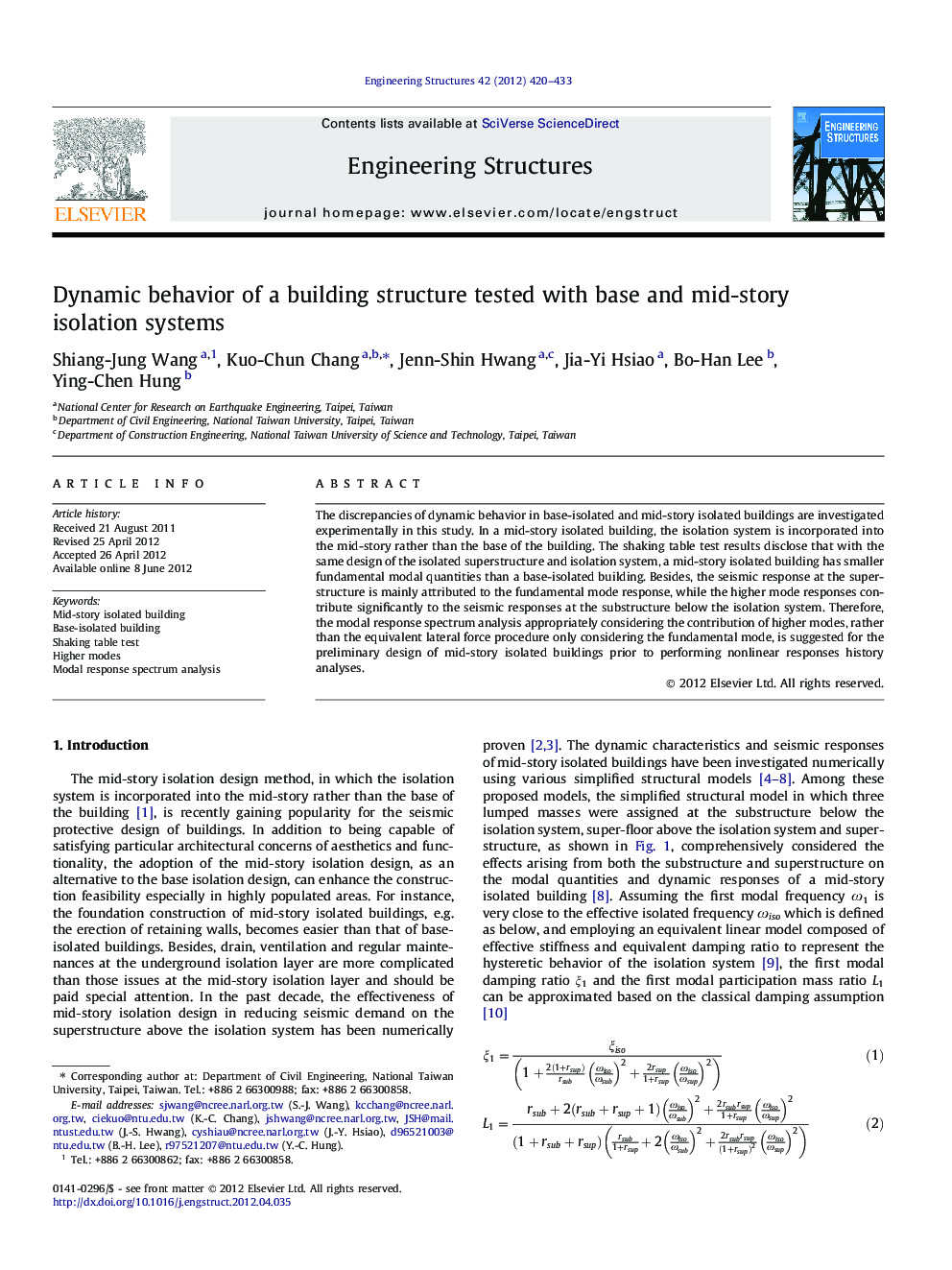| Article ID | Journal | Published Year | Pages | File Type |
|---|---|---|---|---|
| 267471 | Engineering Structures | 2012 | 14 Pages |
The discrepancies of dynamic behavior in base-isolated and mid-story isolated buildings are investigated experimentally in this study. In a mid-story isolated building, the isolation system is incorporated into the mid-story rather than the base of the building. The shaking table test results disclose that with the same design of the isolated superstructure and isolation system, a mid-story isolated building has smaller fundamental modal quantities than a base-isolated building. Besides, the seismic response at the superstructure is mainly attributed to the fundamental mode response, while the higher mode responses contribute significantly to the seismic responses at the substructure below the isolation system. Therefore, the modal response spectrum analysis appropriately considering the contribution of higher modes, rather than the equivalent lateral force procedure only considering the fundamental mode, is suggested for the preliminary design of mid-story isolated buildings prior to performing nonlinear responses history analyses.
► Shaking table tests are performed to study the dynamic behavior of base-isolated and mid-story isolated buildings. ► A mid-story isolated building has smaller fundamental modal quantities than a base-isolated building. ► The higher mode responses contribute significantly to the seismic responses at the substructure. ► The modal response spectrum analysis is suggested for the preliminary design of mid-story isolated buildings.
